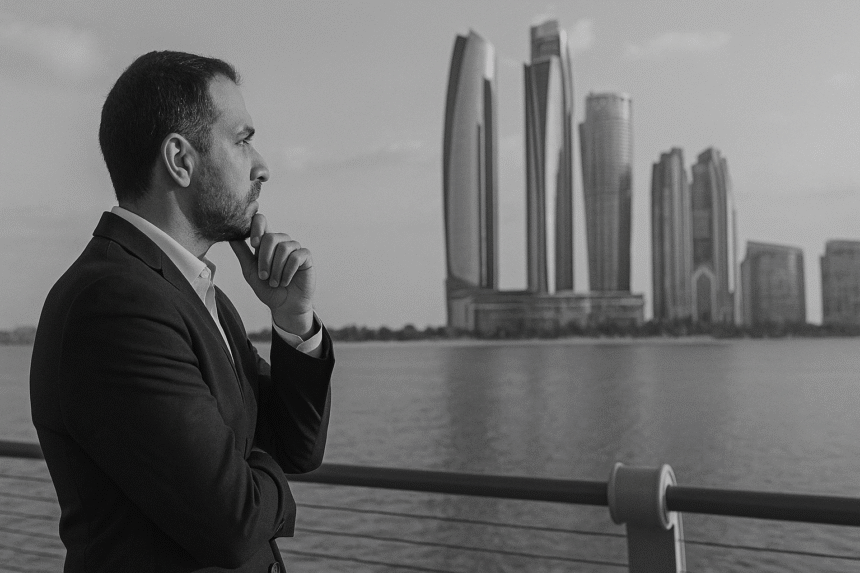Headline:
How Abu Dhabi’s Skyline Prompted a Power Reality Check
Subheadline:
A quiet moment sparked a bigger question: Abu Dhabi energy demand—can the UAE’s skyline keep rising if energy systems don’t catch up?
Introduction (Lede Paragraph):
Abu Dhabi energy demand was the question echoing in Rami Asfour’s mind: “I couldn’t help but think: How much energy will this future demand?” That thought, posted by Rami Asfour as he paused to admire Abu Dhabi’s skyline, hit a nerve. It wasn’t just a comment on architecture—it was a wake-up call about infrastructure.
With cities expanding vertically and ambitions scaling fast, Asfour’s reflection on LinkedIn grounded the excitement with a simple question: are we prepared for the power needs of tomorrow? The Abu Dhabi energy demand challenge is now center stage.
Background & Context:
Rami Asfour, who leads strategy for the Ministry of Energy & Infrastructure in the UAE, has long been a voice at the intersection of sustainability and national development. His recent visit to Abu Dhabi became a catalyst for a broader conversation: behind every skyline lies an energy demand issue—and a systems challenge.
This moment is especially timely. According to Asfour, Abu Dhabi’s peak power load has already surpassed 15 GW and is projected to grow by 30 % or more by 2030. That rapid growth drives Abu Dhabi energy demand beyond current supply capacity. Despite visible efforts in renewables, only 15 % of Abu Dhabi’s electricity mix currently comes from solar and nuclear sources.
Main Takeaways / Observations:
Cities Need Energy Plans That Match Their Growth
The physical expansion of cities must be matched by scalable, sustainable infrastructure—especially electricity. Abu Dhabi’s growth is stunning, but without addressing Abu Dhabi energy demand, the skyline risks outpacing its power supply.
Rethink Energy Before the Crisis Arrives
Asfour highlights the silent urgency: “This shouldn’t happen by chance.” Abu Dhabi energy demand pressures can’t be left unplanned. Investment, planning, and public-private collaboration are key.
Recognize the Policy Shift
Asfour’s post praises the Department of Energy Abu Dhabi and TAQA Group for rebalancing the Abu Dhabi energy demand equation with projects like the Al Dhafra Solar PV Plant—currently among the world’s lowest‑cost solar energy sources. This shows how tackling Abu Dhabi energy demand is becoming a national priority.
Community Reaction:
Gary Cleland simply called it: “Very impressive.”
Naim Telem added: “The future’s energy won’t just power buildings—it’ll have to carry vision too.”
Both comments reflect a growing awareness of Abu Dhabi energy demand implications.
Our Perspective / Analysis:
For legal and infrastructure consultants, this post is a case study in how observational leadership shapes public dialogue. Whether drafting PPP contracts or advising on project delivery risk, the true value lies in anticipating Abu Dhabi energy demand strain.
The UAE’s ambitious infrastructure plans—smart cities, green buildings, electric mobility—will all fall short if Abu Dhabi energy demand isn’t managed. Asfour’s insight is a strategic lens legal advisors should adopt in every procurement discussion: can the system carry the vision under rising Abu Dhabi energy demand?
Call to Reflection or Action:
Next time you see a skyline rise, ask yourself: is the system behind it rising, too? Specifically, is it equipped to meet Abu Dhabi energy demand?



Leave a Reply